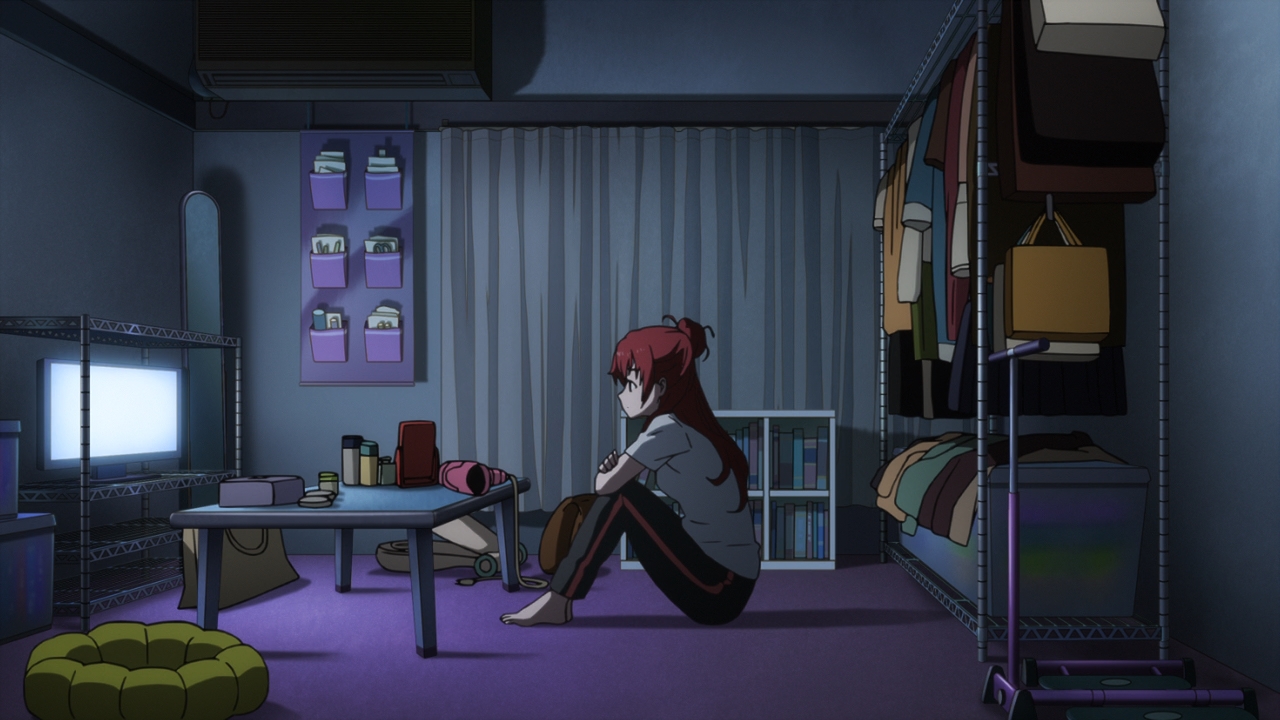A while ago, a friend of mine directed me to a Youtube video about the use of the term “anime.” I’ve seen a lot of confusion over what “anime” is, and that’s somewhat perplexing to me, because, for a long time, I didn’t quite understand what the point of contention was.
I define “anime” as a sub-medium of animation made up of works produced by Japanese studios that are either released first in Japan or simultaneously in Japan and elsewhere, and are often aimed at Japanese audiences.
We group things together based on common traits. Often, the common traits that comprise a group might only be as few as one or two commonalities, such as the set of all men (Common traits: Being male) or the set of all redheads (Common trait: Having red hair). This can result in elements of a group having wildly different characteristics individually, but still being part of that group. If I look down at my anime shelf, I can tell you that between Divergence Eve, Martian Successor Nadesico, Patlabor, Sakura Wars, Record of Lodoss War, Upotte, and Girls und Panzer have nothing in common with each other as a group but the characteristics of being Japanese productions for Japanese audiences, originally released in Japan.
To me, the distinction is very cut-and-dried, but that’s not so for many people, so the debate continues on, and I believe one of the primary reasons for this is because there are many people who, to a certain extent, see the term “anime” as a value judgment. For these people, anime is what they like, so what they like must be anime. The issue with that mindset, however, is that these terms only have use and meaning if we look at things pragmatically and objectively.
RWBY, the Avatar franchise, the Boondocks, and Teen Titans all borrow heavily from art styles, character design conventions, etc. commonly associated with anime and are quite obviously heavily inspired by Japanese animation. Inspiration, however, is impossible to quantify. In addition, if inspiration were the criterion by which we sorted “anime” and “cartoons,” early works of anime would not count, as many of those were inspired by Disney’s work around the same time.
The relationship between anime and cartoons (And to an extent, Japanese media and Western media, in general) is one of constant back-and-forth borrowing of one another’s culture, style, and other elements. Between anime and cartoons, the back-and-forth inspiration would muddy the waters so much that the distinction between the two would become useless.
Imitating, on the surface level, the art style and tropes of shounen fighting anime (No coincidence that many of the cartoons considered “anime” by some tend to borrow from the genre of anime with the most penetration into the West) does not make a show anime, especially when there are many works of anime with wildly varying art styles and sets of tropes that are unquestioningly considered anime. How am I supposed to be convinced that Avatar: The Last Airbender is an anime because it “looks like an anime” when MS IGLOO, Cat Shit One, Bakemonogatari and Tekkonkinkreet are all accepted as anime without question, but look nothing like Avatar: The Last Airbender?
While it’s okay to value one type of animation over another (Modern cartoons don’t do much for me anymore compared to anime, for example), the distinction between the two must be objective if it’s to mean anything.
One might question, however, why the distinction needs to mean anything in the first place. The fact is, to many of us anime fans, there’s something special about the media we enjoy being created by Japanese directors, artists, studios, etc., for Japanese audiences. We enjoy the cultural influences that bleed into the media they create. It’s not just a style or a set of tropes that can be copied and pasted. It’s an entire culture that’s built upon itself for decades. You can’t just replicate that.
Look at it this way: Are you, realistically-speaking, going to tell me that an American studio not just could have but would have created Upotte!, Hidamari Sketch, or Kodomo no Jikan?
That’s why the distinction is important. Not because anime is better than “cartoons” or vice-versa, but because it’s different, and that difference matters to a lot of us.

